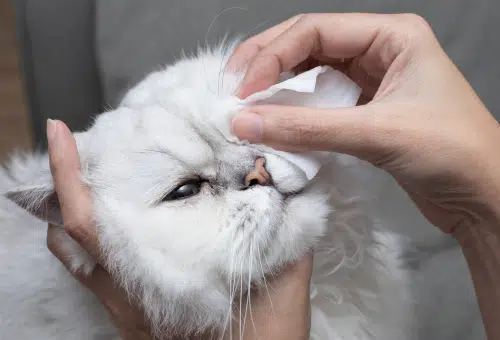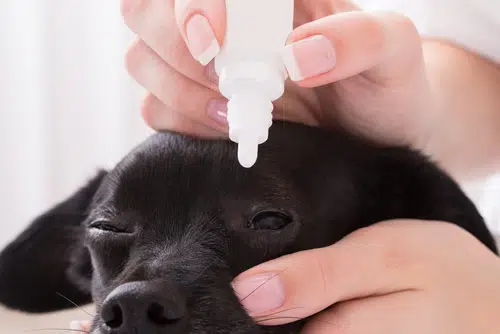Home » Blog » Pet » Pet Health & Safety » Top Tips for Eye Infections in Dogs and Cats
Categories
Tags
animal welfare
breed profile
buying a car
buying a pet
Car
car accessories
car care
car features
car insurance
Car safety
car sales
car service
cat
cat behaviour
cat body language
Cat Breeds
cat food
cat insurance
comprehensive car insurance
Dog
Dog Behaviour
dog body language
Dog Breeds
dog food
Dog Insurance
dog training
eco friendly cars
Kitten
New Car
pet accessories
pet activities
Pet Adoption
pet breeders
pet days of the year
pet fun stuff
Pet Health
pet insurance
pet parenting
Pet Safety
pet services
Puppy
rescue pets
road safety
road trip
safe driving
Recent Blog:
Facebook Posts
2 days ago
Growing old sometimes means we can’t take care of pets anymore. Find out some advice on what to do when this happens:![]()
![]() Senior Pet Parents – Contingency Plans for Your Pet – bit.ly/44bzwkS
... See MoreSee Less
Senior Pet Parents – Contingency Plans for Your Pet – bit.ly/44bzwkS
... See MoreSee Less
Senior Pet Parents' Contingency Plans for Pets
www.pd.com.au
Sometimes senior pet parents need more downtime. For older pet owners, this can be tricky to navigate if their dog or cat is full of beans and wants to4 days ago
Before you rev up the engine, let’s run through a checklist of things to do before starting your car. Not only do these steps ensure your safety (and that of others around you), but they also help in maintaining your vehicle's longevity.![]()
![]() Driving Tips: Your Checklist Before Starting Your Car -
... See MoreSee Less
Driving Tips: Your Checklist Before Starting Your Car -
... See MoreSee Less
Driving Tips: Your Checklist Before Starting Your Car
www.pd.com.au
Heading out for a drive? Hold up a second! Whether you're dashing off to work, running errands, or embarking on a road trip adventure, there are a few1 week ago
Are intestinal worms setting up camp in your dog’s gut without paying rent? Here’s how to spot the main culprits and get rid of them too:![]()
![]() Preventing, Identifying and Treating Intestinal Worms in Dogs - bit.ly/43YjCKu
... See MoreSee Less
Preventing, Identifying and Treating Intestinal Worms in Dogs - bit.ly/43YjCKu
... See MoreSee Less
Preventing, Identifying and Treating Intestinal Worms in Dogs
www.pd.com.au
Intestinal worms, such as roundworms in dogs are one of the least glamorous topics on the planet. These intestinal parasites that basically use our dogsEye infections in dogs and cats can get serious pretty quickly. Not only are the puppy dog eyes at stake, but think how much your cat relies on good eyesight to navigate the world. And pet eye infections are unpleasant and uncomfortable, whatever type of animal is involved.
Plus, an eye infection could be a sign of an underlying condition or problem that needs diagnosis and treatment.
If you think your pet has an eye infection, treating it correctly can help them recover quicker and get back to normal. Though some eye infections in cats and dogs go away by themselves, many do need intervention from a vet or owner. Or both!
But first, how to identify whether your dog or cat has an eye infection or a different problem?
Eye problems in dogs and cats: Mind the signs
Not all eye problems are infections, though many issues can lead to secondary eye infections in dogs. For example, conjunctivitis can have a variety of triggers and is pretty common for furkids.
Regardless, if your pet has red, irritated, swollen, or weeping eyes, you’ll want to take a closer look. Other signs can include pawing at the eyes, squinting or blinking a lot, or general discomfort or irritation in the eye area. Because the symptoms can vary quite dramatically depending on the cause, it’s important to always consult a vet if you notice any signs of eye infection or irritation.

Eye issues in pets that aren’t infections
On top of that, there are eye issues that aren’t actually infections but have similar symptoms. In many cases, they can be confused for eye infections in dogs and cats.
These include:
- Glaucoma
- Ulcers
- Tear duct problems
- Dry eye
- Vitamin deficiency
- Poisoning
- Tumours
- Eyelid abnormalities
A vet visit is recommended so your vet can confirm for sure whether the problem is a simple eye infection or a larger issue. Knowing exactly what you’re dealing with will help your dog or cat get back on their feet as quickly as possible.
What causes eye infections in dogs and cats?
Dog eye infections have a wide range of causes. In dogs, primary eye infections are not as common as in cats and humans. This means that often the eye infection is secondary to another illness, infection, or injury. In cats, however, eye infections are often the primary illness.
Eye infections in cats could be caused by:
- Feline Viral Rhinotracheitis
- Feline Calicivirus
- Upper respiratory diseases
- Cat allergies
- Tumours
- Trauma
- Foreign matter
- Irritants
In dogs, the causes for infections include:
- Viruses
- Bacteria
- Tick-borne diseases (e.g. ehrlichiosis)
- Fungus
- Irritants (e.g. shampoo)
- Foreign matter (e.g. hair or grass)
- Trauma
- Parasites
- Scratch or a cut on the cornea
Also read about cherry eye in dogs with is a different sort of health condition caused by a prolapsed third eyelid!

Treating eye infections in dogs and cats
Because there are so many different causes of eye infections in dogs, there are also many different possible treatments.
Dogs
These including removing the foreign objects from the eye, using medications to treat and provide symptom relief and, in severe cases, possibly even surgery. If the eye infection is due to another condition, treating the primary condition will be the main focus.
Cats
The treatment options for cats are pretty similar to dogs. Of course, dosages and exact medication may vary. However, the treatment will still usually involve antibiotics and/or pain medication. Another option might include surgical removal of debris or the eye itself.
Tips for avoiding future pet eye infections
You may need to continue with medical care at home in some cases. Treating eye infections in dogs and cats can include administering eyedrops, giving them medication and tablets, and flushing the eye to keep it clean.
Though you can’t guarantee you’ll avoid eye infections in dogs and cats going forward, you can take some steps to limit them.
Keeping eyes clean and free from anything that could irritate them (such as dust, grit or hair) helps, which may require professional grooming in some breeds. Managing allergies through diet, medication, or removal of allergens can also make a big difference. And of course, be sure to remove ticks properly and stay up to date on flea and tick treatment.

When to go to the vet
Even if you’ve experienced eye infections before, don’t try to treat them alone.
Using the wrong medication can make things worse, and you’ll also want a diagnosis of any underlying conditions. Because eye problems can often deteriorate quite quickly, it’s always best to visit the vet as soon as you can. And if you aren’t sure what the problem is, it’s always best to get a vet to confirm. They can guide you on the best treatment options and ensure your cat or dog is getting the help they need.
If you have a pet insurance policy, you won’t have to think twice about getting the vet to check over eye infections in your dog or cat. Plus, PD Insurance offers multi-pet discounts to eligible customers and gives you one or more months free when you sign up online.
Share On:




